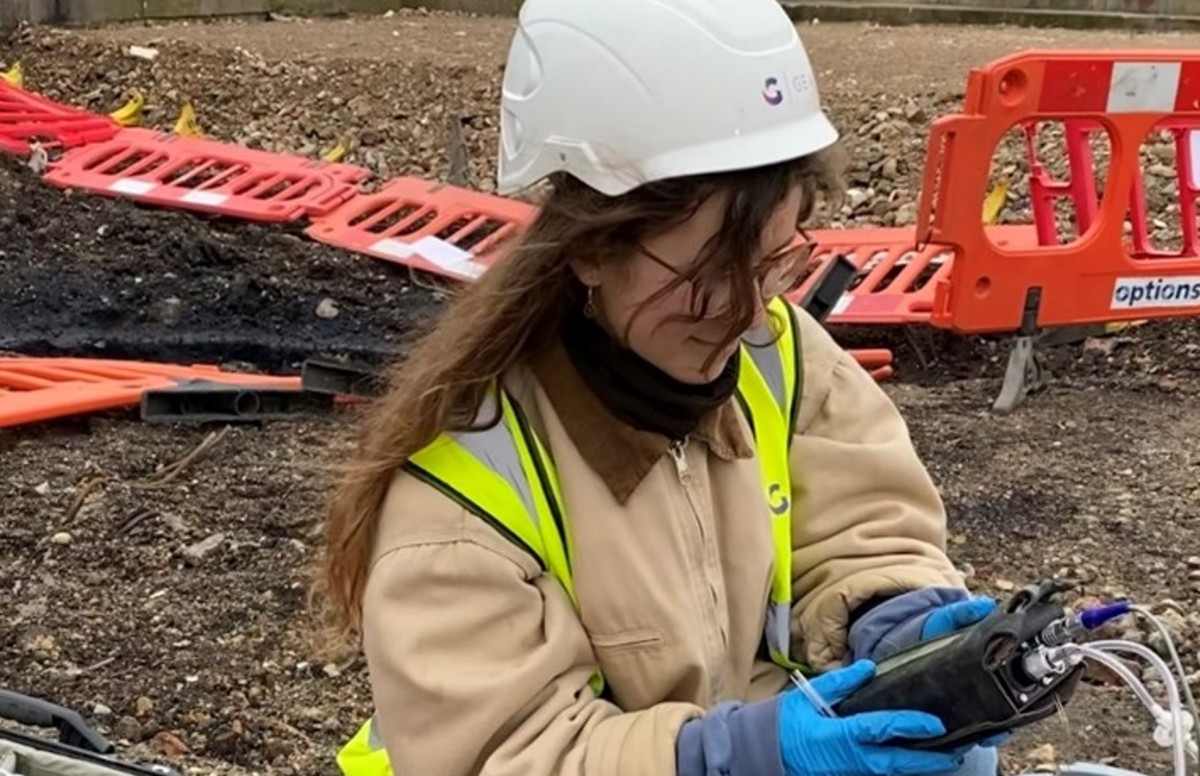The Facts About Geotheta Revealed
The Facts About Geotheta Revealed
Blog Article
The Basic Principles Of Geotheta
Table of ContentsThe Definitive Guide for GeothetaGet This Report on GeothetaWhat Does Geotheta Mean?The smart Trick of Geotheta That Nobody is Talking About
They work together with civil engineers, architectural designers, designers, and other professionals to incorporate geotechnical considerations right into the overall project style and construction process. This needs efficient teamwork, sychronisation, and communication to guarantee that the geotechnical facets line up with the project objectives and fulfill regulative requirements.Mining & Materials Engineering: Concepts of drilling, penetration prices, and factors influencing the selection of boring approach. Blowing up techniques in surface and below ground operations. Mechanical and continuous techniques to fragmentation, consisting of longwall shearing and fullface boring.
Integrated evaluation of fragmentation and comminution procedures. Used by: Mining & Products Engineering.
The Ultimate Guide To Geotheta
Bachelor's degree programs in civil, geotechnical, geological, and ecological engineering normally last four years and include basic education and learning training courses in English, social science, and the humanities, in addition to programs in innovative maths, architectural geology, and fluid mineralogy. (https://forums.hostsearch.com/member.php?265240-geotheta)
Geotechnical design entails the analysis of the dirt and rock conditions at a specific website, and their effects for the development of that site. As a lot of structures depend on the ground for assistance, it lacks surprise that a thorough understanding of the ground conditions, and the suitability of foundation systems, are essential to the long-term stability and performance of the building or structure.
Being experts in the examination of geological developments and ground practices, geotechnical designers perform scientific investigations and screening to recognize the influence these geological formations may have on the design and construction of building, civil and infrastructure projects. This proficiency is important for the style and building and construction of structures, roadways, tunnels, dams, bridges, and supply of water and sewer systems.
The geotechnical group at Douglas Allies consistently seek advice from designers, design engineers, programmers, and builders to make referrals on style and advancement propositions to make sure that the developed structures are suitably created for the ground conditions. The style of footing systems needs to think about the weight of the structure, the ability of the ground to sustain that weight together with movement resistances and efficient building and construction.
The Ultimate Guide To Geotheta
This task is considerably simplified by the use our Douglas Map geospatial system which makes this info readily easily accessible in an easy to make use of internet browser interface. A geotechnical designer will certainly guide the exploration of boreholes and test pits to collect soil and other examples, and also examine surface functions and ground direct exposures to develop a geotechnical model of the subsurface conditions.
Relying on the task type and ground problems ran into, laboratory testing may amongst various other points analyze stamina, compressibility, reactivity and/or leaks in the structure of soil and rock examples. Hereafter data is accumulated and collated, the results are used for a geotechnical model of the site, which is commonly presented as sections across the website.

A geotechnical examination naturally can only assess the ground conditions at the areas drilled or excavated. All-natural variants in dirt and rock conditions can happen throughout a website and in between test locations. It is for that reason great practice that the geotechnical designer be retained throughout building of the job to provide on-site confirmation that the ground conditions experienced are regular with the expectations and recommendations supplied in the geotechnical investigation record.
The Main Principles Of Geotheta
Geotechnical designers utilize their in-depth expertise of dirt and rock to evaluate risk and address issues on diverse framework projectsGeotechnical design is a specialist branch of civil engineering which considers the behavior of earth materials and the application of dirt and rock mechanics. Engineer of Record. As a geotechnical designer, you will examine the physical, mechanical and chemical buildings of soil and rock in order to create foundations, preserving structures and earthworks
Geotechnical engineering is closely connected to and overlaps with, both design geology and ground engineering - https://www.4shared.com/u/w_sNL5Rc/ianhammond2191.html. It's feasible to be experts in geotechnics or help a geotechnical business but be referred to as a design geologist or a ground designer. As a geotechnical designer, you'll require to: build and keep partnerships with clients and other professionals involved in the website, throughout each projectmaintain security requirements on site be conscious of expense implications when you make recommendationsstudy geological maps and airborne photographs from an array of resources and from different time periodsexamine building and construction prepares to see how feasible they are based upon your understanding of the siteinvestigate risks or geological risks for the sitesearch for ecologically delicate attributes, such as landfill beginning to create accurate and interpretive ground modelsplan field investigationsdrill and evaluate samples of bedrock, dirt, groundwater and added products monitor various other professionals on sitesolve technical issues as they develop, such as unexpected structures at drill sitesmonitor conditions throughout and after building and construction to make certain frameworks are stable in the brief and long termadding information accumulated on site to your preliminary researchcreating geotechnical calculations, drawings, and 2 or three-dimensional computer designs translating the datamaking recommendations regarding the recommended use the website

Report this page